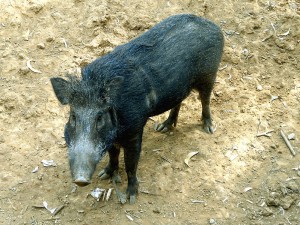The first week of March every year is designated “National Invasive Species Awareness Week,” an initiative to draw attention to the thousands of invasive plants and animals that move into our state and country every year. However, this is a problem that should draw focus year-round.
Invasive species are non-native or exotic plants and animals which can cause harm to the local economy, human health, and the environment. They often out-compete native species, causing habitat degradation, wildlife community imbalances, and diseases that can destroy economically important plants. This is a worldwide issue that can be addressed on local levels. In Florida, researchers have documented over 1,180 exotic plant species and more than 500 non-native fish.

Prevention is among the most effective ways to manage invasive species. Gardeners should be aware of invasive species and make sure they are not unintentionally passing them on to neighbors or natural areas. While many non-native plant species perform well in our yards and do not become invasive, pay close attention to new plants that start taking over your yard. If you’re unsure of the status of a plant, call your local Extension Office or check the Florida invasive plant list.
When enjoying outdoor activities such as camping, hiking, or biking, be sure to inspect what might have attached to your clothing to prevent further seed dispersion.

Released pets are a nearly impossible problem to manage, as well. If you have a pet that you can no longer keep, please find an alternative home for it. Releasing pets into the wild can have serious implications for native wildlife and cause harm to your animal. One needs look no further than the python problem in the Florida Everglades to see the extent of damage this unwise practice can cause. Great information on what to do with unwanted pets can be found at Habitattitude.
Among the most important invasive plants to be aware of in our area include: cogongrass, Chinese tallow (popcorn trees), coral ardisia, water hyacinth, Japanese climbing fern, Chinese privet, tropical soda apple, torpedo grass, and beach vitex. Among invasive animal species in the area, be on the lookout for: lionfish, crazy ants, feral hogs, and Cuban treefrogs.
There are many ways to get involved in the battle against invasive species, including joining your local Cooperative Invasive Species Management Area (CISMA) group. Special thanks to Brooke Saari (bsaari@ufl.edu) for contributing to this article.
 0
0
